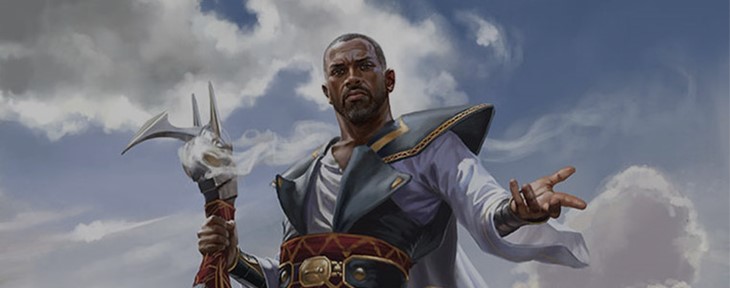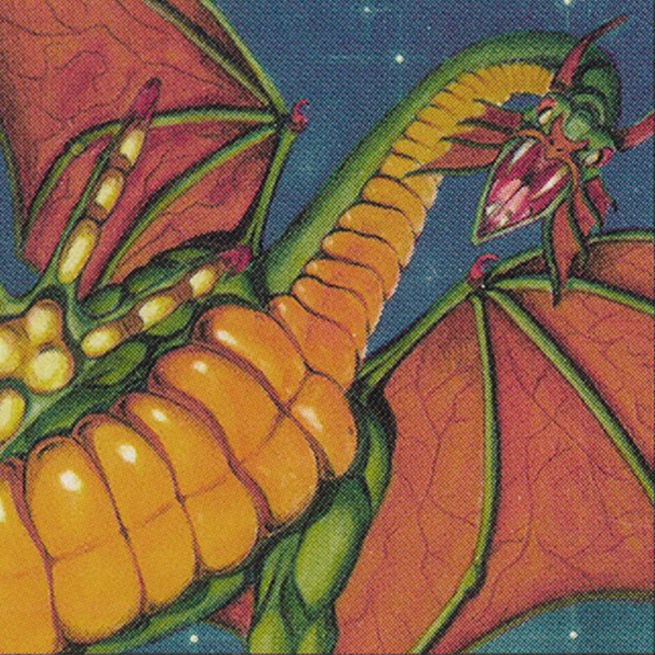Welcome to our MtG artists interview series #11, There's no Magic without art.
Today we share with you our interview with Chris Rallis, who just launched a Kickstarter campaign with some of his most iconic MtG artworks.
Your first Magic card debuted three years ago, and you've already done about 60 cards. How did you got started?
I remember myself at primary school, doing small sketches of superheroes and selling them to my classmates so that I could buy the next issue of my favourite comic book, "Conan". I was 14 years old when I started working as a junior animator for a small animation studio in Athens, Greece.
After 3 years of working and studying at the same time I got my diploma in Graphic Design. I left home at 18 and made a living doing illustrations for Christmas cards, children's books and then for Advertising agencies. That's when my career as an illustrator started.
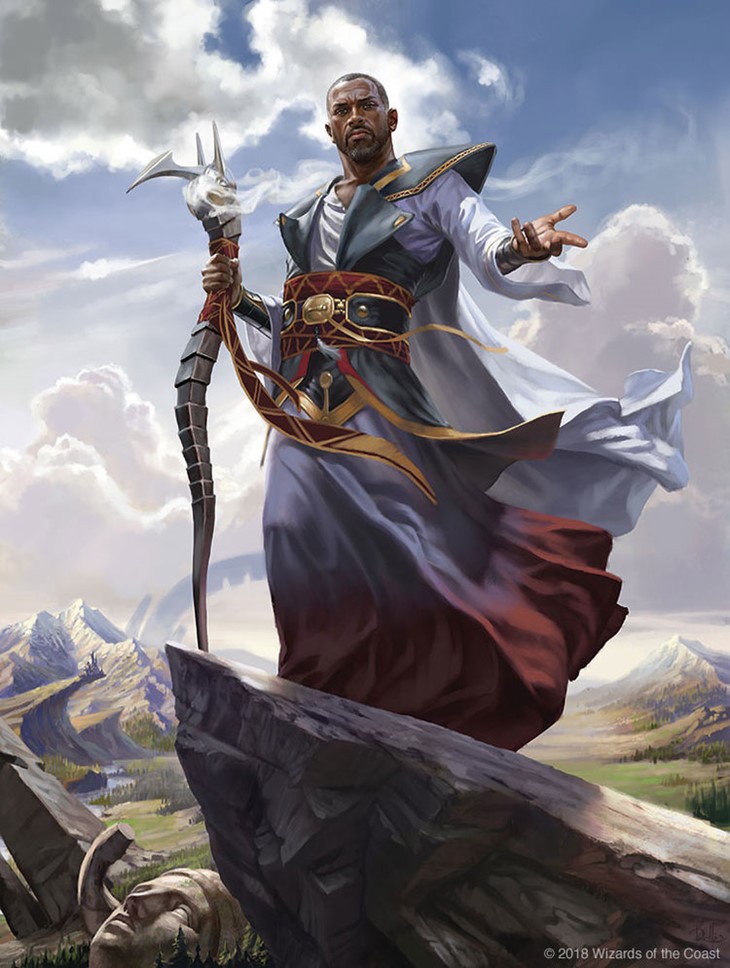
The first time I submitted my portfolio to WotC was in 2010 I think. I did have a ton of illustrations, although I didn't have any fantasy related pieces to show. But I thought "Why not?!". Well, WotC very kindly did get back to me, saying that they'd like to see some fantasy related artwork.
The thing is I didn't have any spare time to do any fantasy art or even personal art. All my energy was drained doing product illustrations and I had to work long hours to make ends meet and to provide for my family. I didn't give up though.
In 2012 Greece was already in financial crisis and jobs were scarce. That's when we moved to the UK and I started from scratch. First I did illustrations for independent game developers, then for Fantasy Flight Games and Applibot. That was the best way to build a decent portfolio and earn money at the same time.
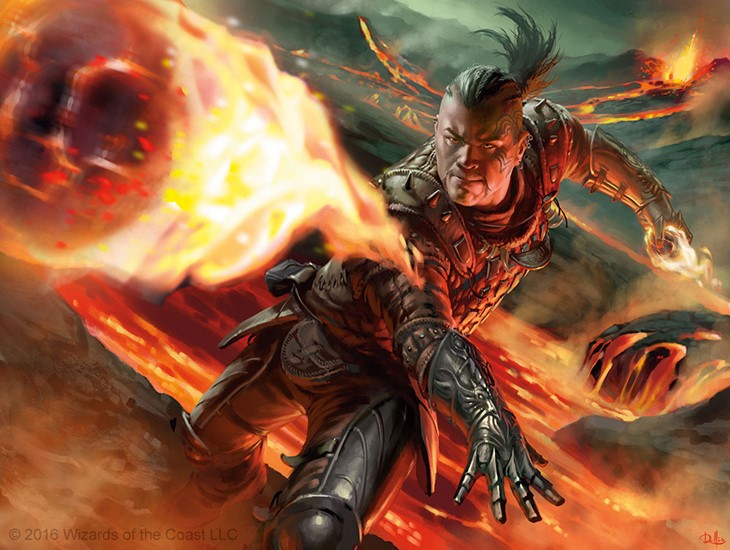
After about a year, in 2013, I was lucky enough to find Jeremy Jarvis' email. It took me almost a week to decide if I should send him my updated portfolio. I'm very shy as a person and I hate bothering people. In the end I just pressed "send" and hoped for the best.
Thankfully Jeremy is a wonderful person and he gave me a chance. I was over the moon! That's when I got my first card assignment and I've been working almost exclusively for WotC since then, doing cards, key art and packaging art.
I'd like to take the opportunity to say that Noah Bradley and Clint Cearley helped me a lot when I was trying to break into the industry. Their advice was invaluable. Except from being great artists, they're also very kind and generous guys!
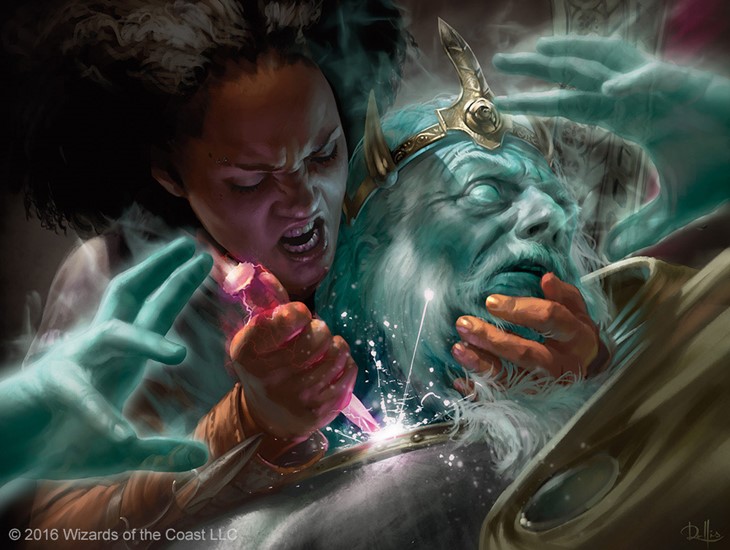
You used to play MTG, was this somehow helpful?
Well, yes and no. It does help in a way, knowing the product, but what really helps is my previous experience. When I was a junior animator I also did concept art. My boss, a very talented animator and artist, also had a great eye for cinematography and special effects. I learned many things about camera angles and how to set up a scene.
Furthermore, when I was an illustrator for advertising agencies I had to deal with very tight deadlines, countless rounds of revision and sometimes nitpicking art directors. That's how I learned to properly read a brief and deliver always on time. Sometimes being a great artist doesn't mean that you're also employable. Being prompt and professional helps a lot!
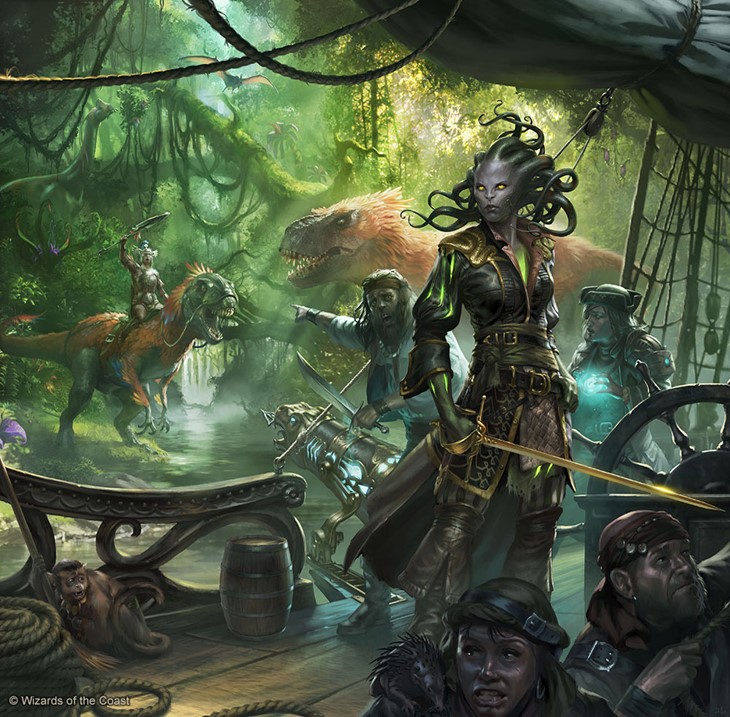
How did it feel to paint the packaging art for both Ixalan and Rivals of Ixalan?
When Wizards of the Coast offered me the commissions, I was very excited and blown away by the gravity of the assignments. As a self taught artist I treat each commission as a challenge, so those were double challenging. I never thought that I'd be trusted to illustrate packaging art, to be honest.
It was so fun painting both artworks. MtG ADs (Art Directors) always make sure we have enough time to do the job and that's very important to us, artists. I really enjoyed working on those pieces. Am I happy with the finished artwork? Well, at the time yes. But, you know what (?)" and that happens with all my artworks" when I look at them after some time I spot mistakes or things that I'd do differently or better. I guess that's good though. It means I'm evolving as an artist.
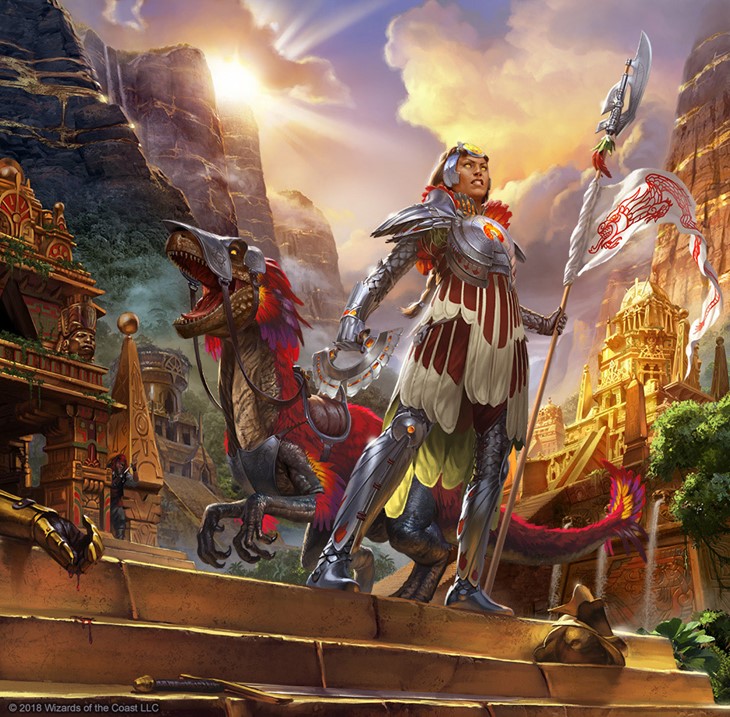
The way you use perspective and composition is surprising. The POV (Point Of View) angle in Valor in Akros and Turn Against, the 'raindrops on the camera lens' effect on Shieldhide Dragon, the Shoulder to Shoulder enveloping frame of bodies, the list goes on. When you're conceptualizing a painting, do you often try to push these elements in unexpected ways?
I'm trying to think as a film director. Different camera angles and special effects help to establish different scenes. Low camera angles make characters appear larger and thus heroic, dominant or even intimidating. In the case of Valor in Akros I used the opposite, a high angle, as a giant's POV.
That way I tried to make the characters look small, so as to convey the sense of the perilous situation they're in. I want the viewer to be part of the action. So, yes if I have to push these elements in unexpected ways in order to achieve that, then I do so.
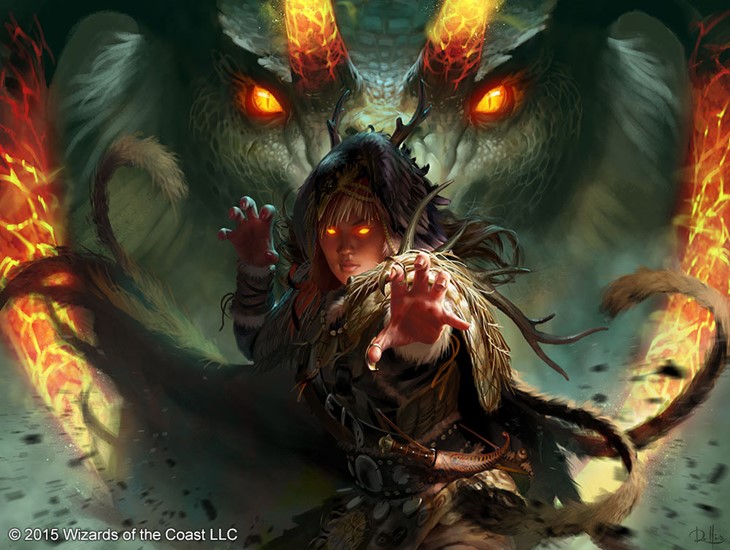
To follow up on that last question, can you give us a brief description of your painting process?
The first thing I do is read the brief very carefully, trying to imagine the scene and looking for key words. I also consult the style guide. Thankfully the material we get from WotC is very detailed and straightforward, so there's no room for misinterpretations. Then I do some research, gathering reference and even shooting my own to help me set up my composition.
Sometimes I submit 2, 3 or even 4 sketches. I want to give as many options to the AD as possible, so that they decide which composition and\or camera angle works best. Once one of them gets approved, I start working on the final colouring.
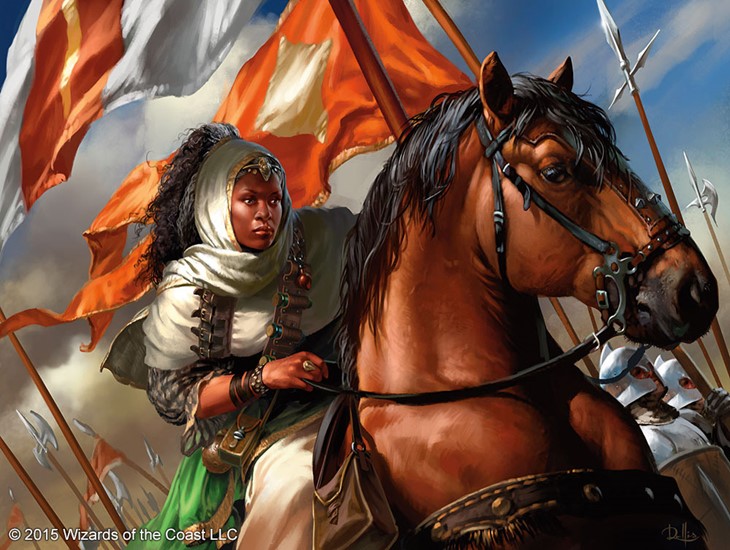
I always start with the main character's face, or whatever's the focal point and then move on to the background. I go back and forth between the focal point and the rest of the painting, making sure that the lighting is consistent. It's an evolving process.
I sometimes even change the lighting or the colours entirely, until I'm satisfied with what I see. Finally I do a colour correction, if necessary. Below is an example from one of my latest cards for Dominaria, Danitha Capashen, Paragon. These are the sketches I submitted"
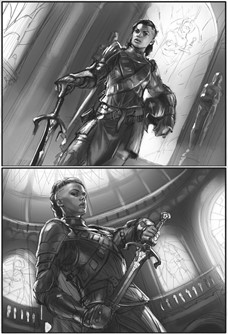
What were the most challenging cards to paint?
Hmmm. I think Liliana, Death's Majesty. That dress was really challenging! Unfortunately I didn't have a silk dress to use as a reference, so I had to do it browsing through lots of photos, from cosplayers to wedding dresses, just to understand how silk reflects light.
I think I had around 20 different photos next to my canvas and I had to start all over again 2-3 times because it didn't look realistic enough
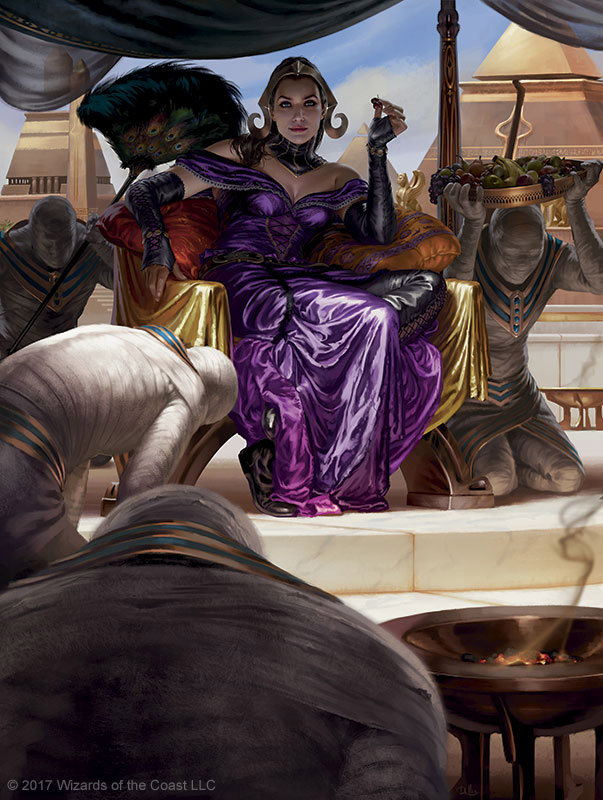
Of the art you made for Magic, can you name some favorites?
Of course! I love Brad Rigney's Planeswalkers Pantheon. It is amazing! :) Oh, you meant MY art I reckon Liliana, Death's Majesty is my best artwork so far. Danitha Capashen, Paragon is also one of my favourites, along with "Dragon Whisperer".
Maybe this will change in the future, as new pieces are always being published. You know what most artists say, "My best artwork is yet to come". That is so true!
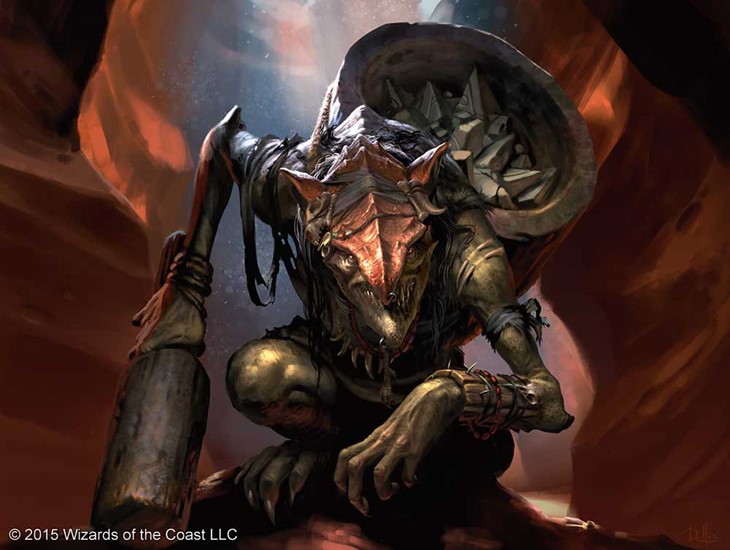
Where can our readers find you, and learn more about your work?
They can find me working in my studio/man cave. They can also find me on rallisart.com and subscribe to my newsletter, on Facebook and on Twitter.
I just launched a Kickstarter campaign where MtG players can buy some very cool playmats of my most iconic artworks.
